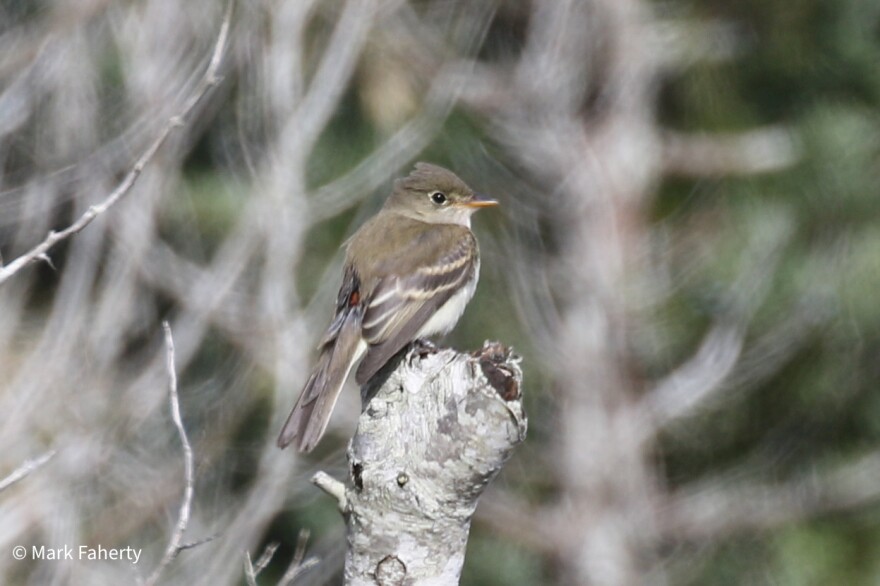As the old saying goes, “if you love something, let it go, if it comes back it’s yours forever...” yadda yadda yadda – you know the one. Well, I love birds, and I love the challenge of puzzling out their often secret identities. This includes the distant, backlit shorebirds on some expansive sand flat; the ambiguous small hawk streaking through the yard; and that sparrow peeking, half-concealed, from a hedgerow. But, as much as I’d love to assign a species to every flitting, fleeing, and skulking bird, sometimes you have to let it go.
This is an especially hard lesson for young and/or intermediate birders, those getting good enough to know most of birds they see. The tendency is to assign a species no matter what – leaving birds unidentified is a sign of weakness, I suppose. Even worse is the tendency to overidentify even beyond species – the classic example is the duffer who says they just saw a “big female” Red-tailed Hawk, when in reality the sex of a solitary Red-tail is impossible to discern. All of us birders have overidentified at some point in our development, but experience eventually teaches you to let it go, as I had to do recently.
This past weekend, a rain-shortened soccer match sent my son and I for breakfast sandwiches, which we took to a bay beach in Brewster, right at the mouth of Stony Brook. This site has been exceedingly birdy on my recent visits – something about the topography seems to concentrate songbirds moving east along the inland edge of the marshes. The rain cleared as we enjoyed a splendid rainbow spanning our view of the bay, then we headed out.
Several birds were assembled at the inner corner of the marsh where it abutted the thicket below parking lot – a dozen Song Sparrows, a flock of House Finches, a couple of Palm Warblers. Among them was a small gray flycatcher of a sort that shouldn’t have been there in mid-October, and one, I knew, that wouldn’t reveal its identity easily – this was one of the dreaded Empidonax flycatchers. This genus of small, maddeningly similar species is the bane of field birders across the continent.
Lacking a field DNA kit, this was at least going to require my camera, which I retrieved from the car. As is his habit of late, Beckett went off in search of Bull Sharks and jaguars in this imaginary Amazon we were exploring, giving me a chance to seek the mystery flycatcher. Almost immediately we were distracted from our respective pursuits by a lovely and close Blackburnian Warbler, belt-high, working its way through a thicket. Like the flycatcher, this long-distance migrant was tardy for its flight south. Successfully reaching the mountains of Peru and Bolivia typically requires an earlier start than mid-October, so this bird is cutting it close.

Eventually the flycatcher appeared a bit further east in the marsh atop the skeleton of a salt-killed cedar, and I managed some decent photos. I knew it was one of a few candidate species, and almost certainly an Alder Flycatcher based on the dull gray upperparts, thin white eye ring, relatively longish tail and shortish wings, plus the habitat and date. The lookalike Willow Flycatcher, a sparse local breeder, is so similar as to be indistinguishable even in the hand – one must hope they talk. Sadly this one stayed mum, and after a few minutes got up and disappeared over the trees. So it was that I was forced to “let it go” - I left it in my eBird checklist as “Empidonax, probably Alder”. Perhaps this bird will live its whole life, including maybe multiple round trips between some bog in Quebec and the Andes, having never been properly identified by a birder. Despite one birder’s small ego bruise in that Brewster marsh, I suppose that’s ok. What’s not ok is that a lot of you, especially those with kids, probably have that Let it Go song from Frozen in your heads as a result of this Bird Report – sorry about that.








